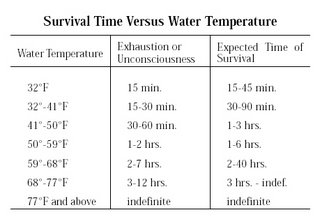This post started out as a comment to Jesse's post on voluntary poverty,
found here. Turns out I had more to say on the subject than was really justified in a comment. It's an interesting convergence of thoughts, I've had the Sword of Damocles and the Green "footprint reduction" ideal kicking around in my head for a few days. Jesse's post served as an accretion point.
Every now and then I get the urge to simplify - even to the point of living an ascetic life. The furthest I get is to sell a few old books and CDs. I think I would enjoy truly living simply - on a self-sufficient commune, or as a monk. I might even be happier than I am now. The problem is I'm also rather attached to my American middle class life, my career, my house, my car, my books, my facile access to quality medical care, etc. Like other utopian ideals, a life of simple, possession-free contentment is just a daydream. Even if I achieved this state, I know I'd soon miss the consumptive life I left behind.
On ‘habitat-for-humanity’-style mission trips, I've worked and lived with people living close to or below the poverty line. They are some of the happiest people I've ever met. We go down there to put a roof over their heads, but they teach us something more valuable – happiness is not found in possessions or on the bottom line; the most valuable things in life cannot be purchased. That said, they struggle just to scrape by, to put food on the table and a roof over their heads. They eat a less healthy diet and have less access to quality medical care. They are less educated, and they understand less and interact less with the world beyond their immediate lives. There are tradeoffs to a truly simple life. Perhaps the greatest burden of living in historically unimaginable wealth is that we have an equally large responsibility to use our wealth and power to improve the world, and reduce humanity’s impact on it.
For the good of the planet, the modern world needs to become content with less (Americans, in particular, with a lot less), but it won't happen quickly. The modern world is built upon a framework of overconsumption; like a patient on life support, it would kill us to pull the plug – the transition must be gradual. For those enlightened souls who believe in living simply to remove themselves from society will only dim the wits of society, and it won't prevent any mini-malls. The best we can do is teach our peers and our children to reduce our footprints - to be happier with walking trails than Wal-Marts; to understand oranges ought to be a seasonal fruit (or an outright delicacy), to understand that universally available fishsticks means eventually no one will get to eat fish.
To borrow a turn of phrase from Lincoln: It is for us the wealthy, rather, to be dedicated here to the unfinished work which they who support living within ourselves have thus far so nobly advanced. It is rather for us to be here dedicated to the great task remaining before us… that we here highly resolve that extinct species shall not have vanished in vain – that this nation, this culture, this world shall have a new birth of freedom in sustainability – and that humanity and all the living beings under their stewardship shall not perish from the Earth.
One final thought: the Benedictine monks of the Weston Priory in Vermont allow/conduct spiritual retreats at their monestary. One of these days I hope to take at least a few weeks there in solitude. It's a safety valve in the back of mind, if the crush of modern life gets too strong.
